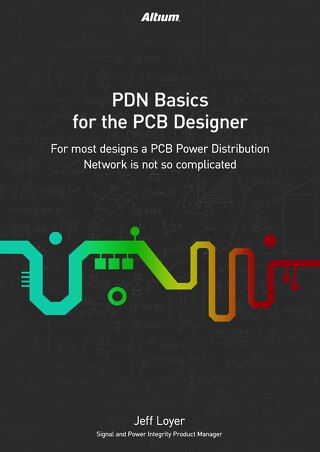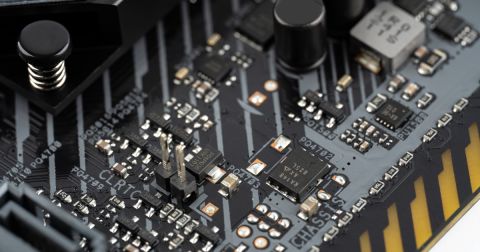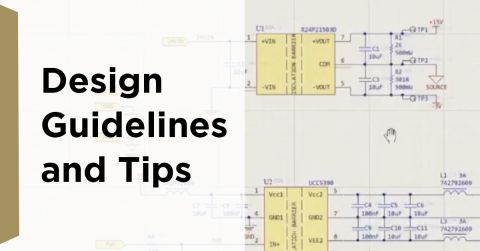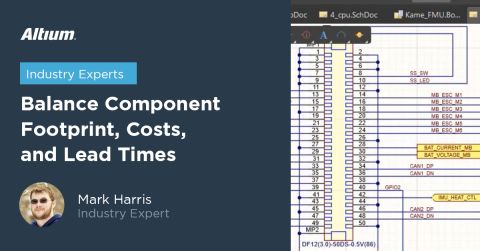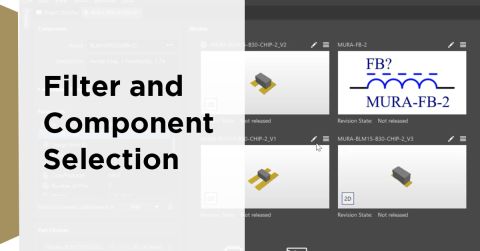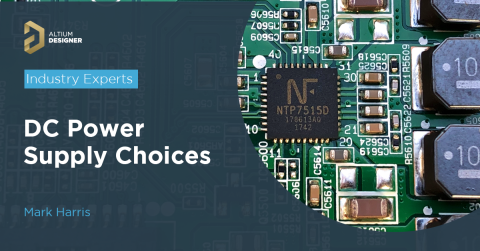How to Filter Noisy Power Rails

Although a power supply might look like it produces clean power on an oscilloscope, power supply operation in a real system can create noise or be susceptible to noise. Power rails often need to serve power to multiple devices in a system at the same voltage, but with clean power in different portions of the system. When that is the case, noise on the main rail may need to be cleaned up before being provided to different portions of your system.
Depending on the frequency range at which components are operating, this can be done with simple filter circuits, extra capacitance, and in targeted cases a ferrite bead is appropriate. So in this blog, I'll outline some cases where different types of filter circuits can be used on a power rail to filter power coming into a target device. Sometimes, the best case is to separate a rail into different rails with multiple regulators, while in other cases a single rail can be pulled from and filtered to provide clean power to different devices.
Where Filtering is Applied for Clean Power
We can visualize where to apply filtering to ensure clean power reaches different devices by looking at a power tree. The image below shows an example power tree as a block diagram with filtering applied in different sections of the power tree. This image assumes the rail provides a DC voltage, and there are several devices pulling off of each rail.

The important context here is a matter of frequency. Different devices requiring power across different frequency ranges will be able to work with different types of filtering. For example, low pass filtering with low cutoff would be appropriate for a device that only operates in DC. In contrast, a digital device with very fast I/Os will need a power rail with low impedance up to very high frequencies, despite the fact it is pulling power from a DC rail. Stability of power in different frequency ranges will dictate what type of filtering is appropriate.
The table below outlines some examples where different types of filtering can be used.
|
DC loads |
Low pass filtering, could be a higher order filter circuit |
|
Low frequencies (DC to MHz) |
Low pass filtering with RC or LC circuits, requires pole-free transfer function |
|
High frequencies (MHz to GHz) |
Normally the realm of digital components, requires capacitance with very low inductance |
Now let's look at some examples in different frequency ranges.
DC Components
When a component only needs DC power, meaning there is no switching action or AC current drawn onto the power rail, then low pass filtering is appropriate, including up to higher order low-pass filtering. This could be applied with one of the following components or circuits:
- Low pass LC filter
- Low pass RC filter
- Ferrite bead
- Large capacitors
- Active DC filter with an op amp
These components or circuits provide low or moderate impedance at or near DC, while they provide high impedance at higher frequencies. With a ferrite, low pass RC filter, capacitors, or active DC filter, the response will be first order with no pole in the transfer function. In an LC filter, the circuit needs to have enough damping so that any pole in the transfer function does not correspond to an underdamped transient.
Low Frequencies Above DC
At these frequencies, power is typically being provided to some specialty analog sensors, which means the board is most likely a mixed-signal system. In these ranges, the best option is typically an LC or RC filter, although an active filter could also be used.

Power at these frequencies needs to be supplied up to some band edge. This is where you should set the cut off for a low pass filter. For an RC filter, this is very simple and is based on the time constant. For an LC filter, you will still need to make sure that the transfer function does not have a pole that would correspond to an underdamped oscillation.
High Frequencies and Digital ICs
This is where best practices for power integrity need to be applied. The PDN needs to have low impedance up to quite High she's reaching into the megahertz range. Typical guideline of placing volk, decoupling, and bypass capacitors is a simple way to address this requirement on digital Asics with only one IO Supply.
In digital processors, there can be multiple I/O supplies at different voltage levels which need to provide Power to videos with fast Edge rates. This is why large processors often need a large number of capacitors , and more iOS generally require more capacitance. These supplies could exist alongside analog or slow digital supplies that can still work with lower bandwidth. The question then becomes:
- Should you use a single rail for multiple supply pins at the same voltage?
- If yes, how do you isolate these connections from each other?
- If not, how should you design the different PDN sections?
The alternative approach with regulators isolating power from a single rail is shown below.

So which of these approaches should you use? Sometimes this is not such an easy question to answer. There is a simple method for estimating the amount of capacitance a single rail needs, which I will address in a different article. But in those cases it might be difficult to fit all of those capacitors onto a single rail and expect noise to remain low. This is why in some systems, components with multiple supplies will have their own regulators and their own capacitance as this will provide isolation between rails.
An example for an FPGA dev board is shown below. This power topology uses multiple regulators in order to provide clean power to different pin banks in the FPGA. There are a couple reasons for this. First different rails need different currents at different edge rates, so it is easy to design with separate rails using different regulators. Second, the slower rails could be noise-sensitive, so using multiple regulators provides natural isolation.

Final Thoughts
To summarize, applying filtering to a noisy power rail in order to create one or more clean rails requires understanding the frequency at which the loads must operate. If the design needs to support a set of digital ICS that require clean power up to very high frequencies, then you should not use a component that creates high impedance along that rail.
No matter what type of power topology or filtering circuit you need to design, you can create circuits and design PCBs with the industry’s best electronics design features in Altium Designer®. To implement collaboration in today’s cross-disciplinary environment, innovative companies are using the Altium 365™ platform to easily share design data and put projects into manufacturing.
We have only scratched the surface of what’s possible with Altium Designer on Altium 365. Start your free trial of Altium Designer + Altium 365 today.

